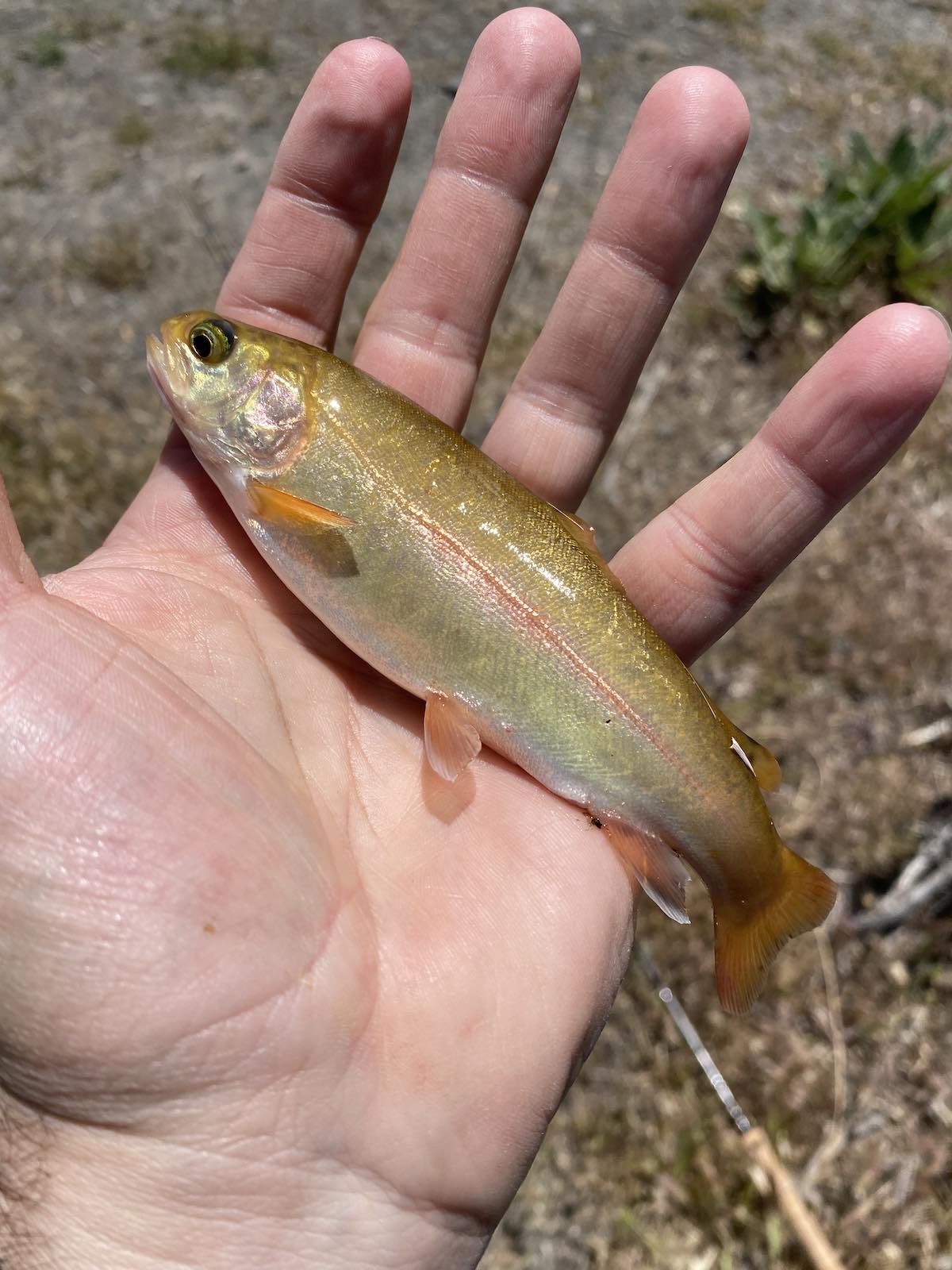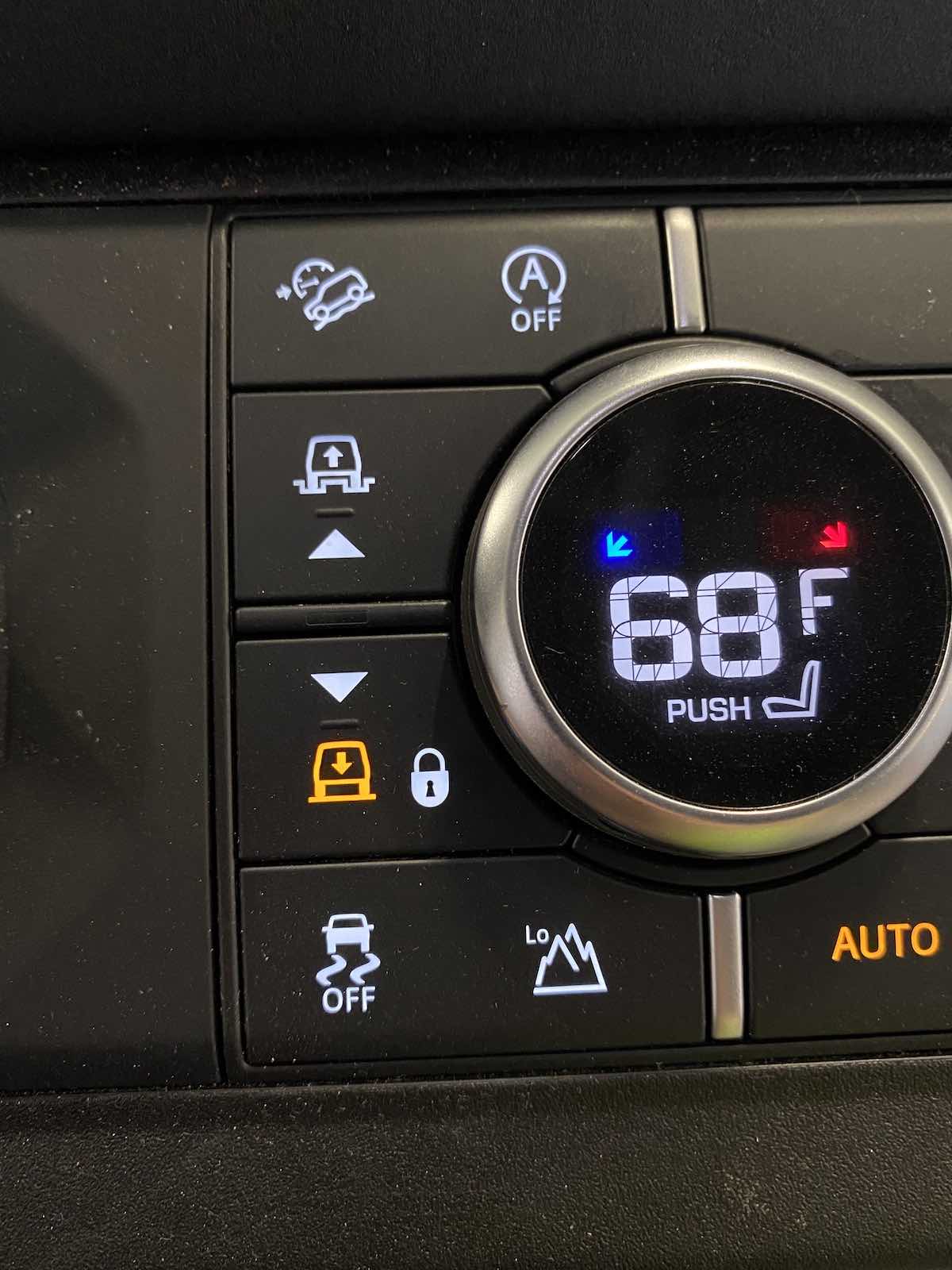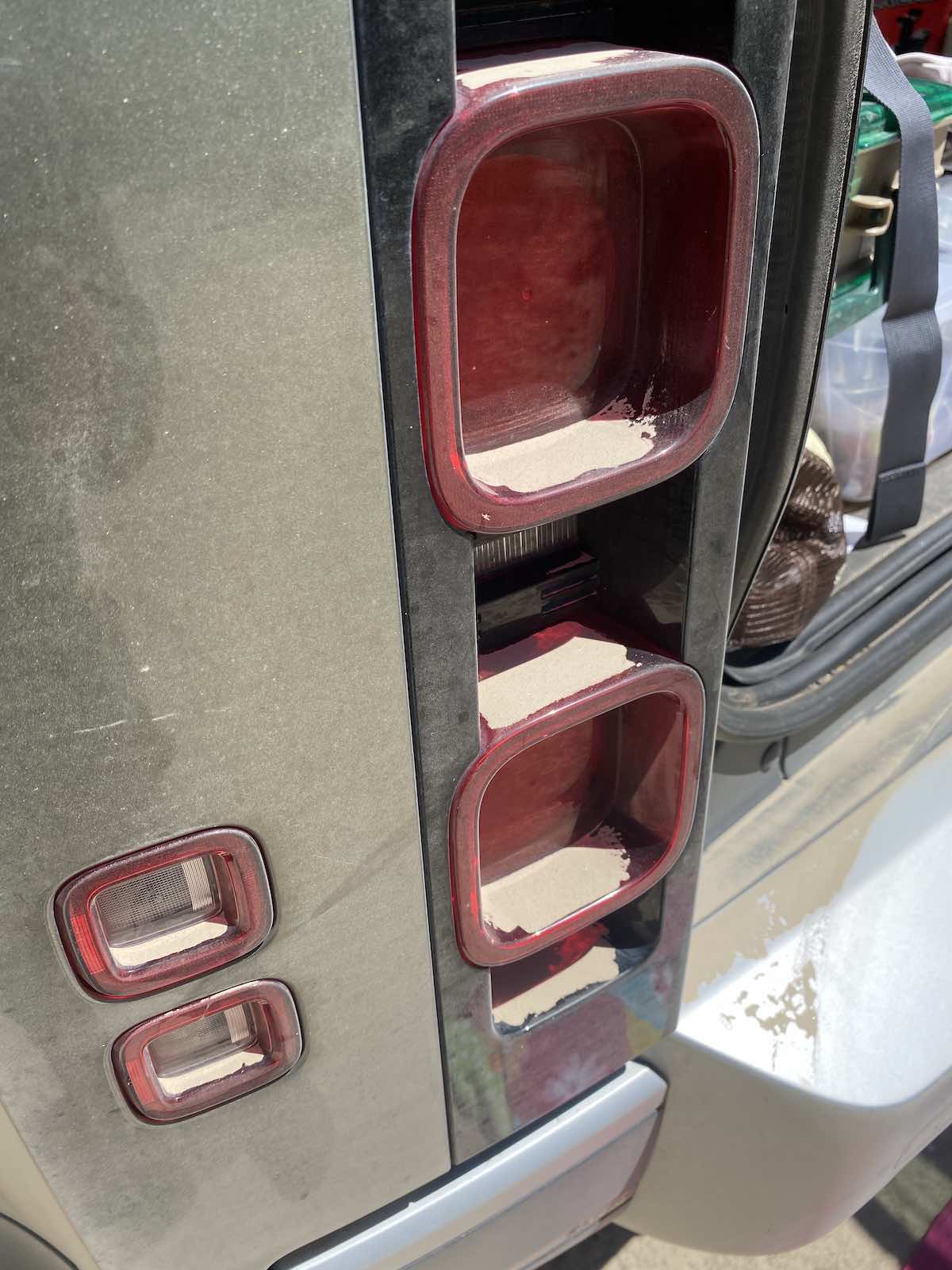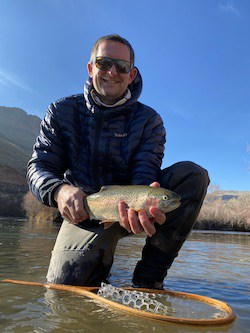THE BEST FLY FISHING VEHICLE
July 4th, 2022
If you’re doing it right, fly fishing will bring you to some remote wilderness areas. Places that take time to access. Places that have rough roads. Your vehicle matters.
You’re going to want something with 4WD (not AWD), which should go without saying. But, there are many more important considerations to make.
In the below article, I’ll explain what you should require in a fly fishing vehicle, what you should have inside the vehicle, and I’ll pepper-in some stories from my personal experiences.

In the above picture you can see my Land Rover Defender. It’s a vehicle that serves me well on my fly fishing adventures. There are other vehicles, however, that will do as well or better.
The Best Fly Fishing Vehicle
I’ve driven plenty of 4×4 (4WD) vehicles in my time, including a Land Rover, Chevy Trailblazer, Chevy Blazer, Chevy Tahoe, Chevy Suburban, Chevy Durango, Suburu Outback, Jeep, Jeep Cherokee, Jeep Grand Cherokee, Mitsubishi Outlander, and plenty more.
My favorite, without a doubt, is my Land Rover Defender.
The reasons are many, but some of my favorite features as a fly angler include:
- Multiple cameras that show outside the vehicle, including a “floating” camera showing the exterior vehicle view (as if taken by a drone), and a camera showing what’s underneath the vehicle.
- Vehicle-height selections from low, medium, to high clearance.
- Plenty of USB charging ports (for my SpotX, iPhone, spotlight, and more).
- The front seats hug your body to keep you firmly in position. There’s no need to lean into turns.
I test drove the 4-cylinder and the 6-cylinder, and could barely tell a difference between the two when merging onto a freeway. At the time, the 6-cylinder was $13,000 more, so I opted for the 4-cylinder and have been really pleased with it.
If you’re going to tow a boat, it’d probaby be smart to opt for the 6-cylinder.
The best feature is the height adjustment. With the push of a button, I can raise the entire vehicle to a height that will drive over virtually anything I’ll encounter.
In the words of Ferris Bueller, “If you have the means, I highly recommend picking one up.”
As far as negatives, I don’t like that I can’t turn-off the bluetooth, and if I don’t want the engine to shut down when I’m at a stoplight, I need to push a specific button. It’s moronic.
Pathfinders and Jeeps can be fantastic off-road vehicles. But, I’m not a fan of how loud Jeeps usually are on the highway.
Here’s a palomino trout I caught in a remote area that I was able to navigate to with my 4WD.

Mandatory Vehicle Features
Here are a few bullet points showing you what features I highly recommend you have available in your fly fishing vehicle:
- 4×4 (4WD) is mandatory. During the winter and spring seasons it’s not uncommon to encounter slippery and wet roads, or even washed-out dirt roads in the mountains.
- A spare tire is absolutely required. Mountain roads almost always have sharp and jagged rocks strewn about. These rocks fall onto the roads daily.
- Your vehicle should have a high clearance. A lower clearance means you’re going to bottom-out. I distinctly remember having to drive my Audi A7 (long story) to my mountain fly fishing club. I figured I could make it work once or twice, since my 4×4 SUV was temporarily being used by a family member. Well, I bottomed-out on a rock. It was cringeworthy.
- Exterior cameras can keep you in tune with rocks and debris outside (and under) your vehicle. Also, if you’re crossing through shallow water, cameras can be very advantageous.
- Roof racks are super helpful. Nowadays they even have fly rod holders that affix to the top of your vehicle. But, roof racks are valuable for extra gear and even tents that sit on your vehicle’s roof.
- GPS navigation is a nice-to-have. When I drive along a road, I can see where I am in proximity to the river.
- One thing I liked in some of the SUVs I’ve owned is a standard electrical outlet or two. It makes airing up mattresses and rafts a breeze. Lighter adapters can do the job too.
Here’s a picture of the buttons (in the middle) that raise and lower my vehicle, from low to mid to high clearance. It’s a feature that comes in very handy in rocky and rugged areas.

What You Need Inside Your Vehicle
If you remember nothing else from this article, remember this section.
What I’m going to explain to you is based on my personal experiences, and regrets. I fly fish 80+ times each year, so I’ve encountered plenty of different situations.
Here are my nuggets of advice.
Bring a chair and a mat. You’ll thank me. It’s much easier to get your waders and boots on when you have a folding chair next to you. A mat (or towel) is great when you’re changing-out your footwear, or when you put your stockingfoot waders on and don’t want to step on rocks and gravel.
Always pack a spare rod and fly line. Fly rods can break at the most inopportune times, and fly line can tear without warning.
Keep a good pair of cold weather gloves in your SUV/vehicle at all times. Don’t miss my article on the best fly fishing gloves I’ve ever used.
Keep alcohol wipes in your vehicle. Why? Because if you inadvertently touch poison ivy, oak, or sumac, you can wipe the affected skin with an alcohol wipe within 15 minutes (or so) to eliminate the effects. This has been a saving grace for me several times. Either this method works extremely well, or I’m immune to poision oak.
You’re going to get a flat tire. It’ll happen. Be prepared for it.
Understand ahead of time how to change your tire.
Case in point.
I once purchased a used Chevy Trailblazer with 168,000 miles on it as a dedicated fly fishing vehicle. After reading through the manual, I realized that to change the tire, I had to access the “jack” through a hole in the rear bumper. It was preposterous, but it worked. I’m glad I knew that information beforehand, rather than figuring it out in the dark after a day of fishing.
Fix-a-Flat is usually a worthless product for the type of flat tires that you experience in the wilderness. It’s fine if you have a nail in your tire from driving in a construction area–it’ll buy you time, but not when a sharp rock has punctured your tire. The hole is too large. Plus, tire shops don’t like it–it makes their job messier.
Bring a cooler with ice, if possible. You can use those reusable frozen ice packs too, but they don’t work as well as plain old ice. During hot summer and fall fly angling, coming back to the truck with an ice cold drink waiting is pure pleasure.
Personally, I like to keep a compact garbage container in the passenger footwell if no one’s with me.
Here I am scouting the river for rising trout.

A Lesson Learned
It was a chilly January evening and I was driving back from a relatively successful afternoon casting dry flies to rising trout on a local river. There had been a modest blue-winged olive hatch, and the fish had been in a cooperative mood.
The river road borders steep rocky slopes, as many do, and I always watch out for chunks of sharp rock on the pavement.
But, despite my efforts, a rock snuck past me unnoticed. I felt that abnormal vibration that you hope to God just disappears in a few seconds. Maybe it’s just a rut in the road.
Not this time.
This is in the middle of nowhere, miles from civilization. The temperature is in the upper 30’s, and it’s really wet out.
I pulled-over onto the super narrow shoulder and saw my right-rear tire was as flat as a pancake. It must’ve been one hell of a sharp rock.
When I was a kid, I was a boy scout. The organization’s motto is “be prepared.”
But, I wasn’t prepared. I hadn’t learned ahead of time exactly how to change a tire on this vehicle. That mistake would cost me time.
So, I grabbed the owner’s manual and walked to the back of the vehicle. I soon learned from the manual that the jack was located in a trunk compartment, where to properly place the jack on the frame, and so on.
In the mean time, two other fly anglers flew by me in their pickup trucks, not even taking their foot off the gas.
Anyhow, the kit included a rudimentary scissor jack with one of those two-piece jack handles (the part you spin in endless semi-circles to raise the vehicle).
I stood there contemplating how it all worked (I’d never used one before), and that’s when a vehicle headed in the opposite direction pulled-over in front of my Defender.
It was the dam tender.
I explained the situation, and he didn’t hesitate to jump right in. He even grabbed a proper 4-way cross wrench from his truck for removing the lug nuts.
While he was taking off the lug nuts, I got busy spinning the scissor jack handle.
The jack rose so slowly that it was literally imperceptible. After a few minutes, I was exhausted but didn’t want to show it. After all, this guy stopped to help me, so I didn’t want to take a break and eat up more of his time.
My arms kept spinning, and spinning…endlessly.
Finally, after what seemed like 150 revolutions, the vehicle had risen enough for us to get the tire off and install the spare.
The sun had already set and I was really appreciative that this guy had saved me a lot of time.
I thanked him for his generosity, and handed him two $20 bills. I said to please grab dinner on me.
He shook his head, and instead said, “Just pay it forward and help someone out.”
He was a good dude.
I thanked him again, and finished putting the tools away so I could head for home.
Once I was back on my way, I was so exhausted that I felt like I might throw-up for the first ten minutes or so. You know the feeling, like after a hard two-a-day football practice in high school. Or after running hard ladders in basketball practice.
Now, I realize this sounds absolutely pathetic–I was spinning a tire jack. But it was so indescribably awkward–you can’t spin those cheap jack handles in a nice clean circle–it’s a really jerky process.
That settled it–I’d decided to buy a proper jack that evening when I got home. And I did. And it’s been in the back of my Defender ever since. A nice, sturdy, easy-to-use jack.
Learn from my mistake. Get a decent jack. I bought this one.
This spare has come in handy for me.

An Expensive Mistake
A couple years ago my fly fishing SUV was an old Chevy Trailblazer (as I mentioned earlier), and while it had a ton of miles, it did the job well and looked great for an older vehicle.
I’d found a beautiful river fork that held smallish but feisty brown trout, and never had anyone on it. Ever.
I discovered this water while exploring in the mountains. I’d happend upon a long, relatively narrow path leading through brush. It was well worn by what I believed were probably side-by-sides or jeeps.
Generally I’m a walker, but this day I thought the clearance was just right for my SUV to squeeze through.
I started down the pathway, and I could hear brush swiping the vehicle as I progressed. It was a little like nails on a chalkboard, but I kept going. I mean, every car brushes up against bushes once in a while.
When I arrived at the end of the path, there was a clearing, and river access was a breeze. It was perfect.
As I walked around to open the rear hatch, I saw innumerable scratches along the entire length of my Chevy. Both sides were covered. We’re talking tens of thousands of tiny scratches.
I licked my finger and swiped at the paint job. The scratches didn’t disappear.
Son of a b****.
I can’t even tell you how long and arduous of a process it was to get most of the scratches to blend or disappear.
The lesson here is, if you can reasonably walk, just walk.
Don’t risk your paint job, your axle, or your tires.
Here’s a picture of the dirt accumulation after 40 miles on a dirt road chasing trout.

Summary
A quality 4WD vehicle will expand your fly fishing opportunities to include more rugged and remote areas. This often translates to better fishing and more solitude.
It’ll also increase your confidence while trekking through the wilderness. Trusting in your vehicle matters. We’ve all driven cars that seemed like they could break-down at any moment. That’s not a safe proposition when you’re miles from the nearest town.
I’m not naive. I realize not everyone can simply go out and purchase their dream vehicle. That’s not what I’m suggesting. When I first bought my my used Trailblazer it had 168,000 miles on it.
It’s my hope that, at a minimum, you can glean some helpful tips on what features to look for in a fly angling vehicle, what items you want to pack with you, and preparedness for unexpected pitfalls.

About the Author
My name's Sam and I'm a fly fishing enthusiast just like you. I get out onto the water 80+ times each year, whether it's blazing hot or snow is falling. I enjoy chasing everything from brown trout to snook, and exploring new waters is something I savor. My goal is to discover something new each time I hit the water. Along those lines, I record everything I learn in my fly fishing journal so I can share it with you.
Follow me on Instagram , YouTube, and Facebook to see pictures and videos of my catches and other fishing adventures!


